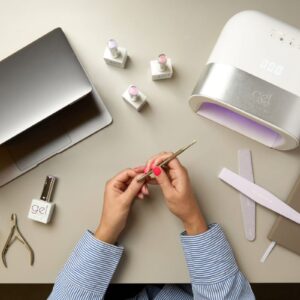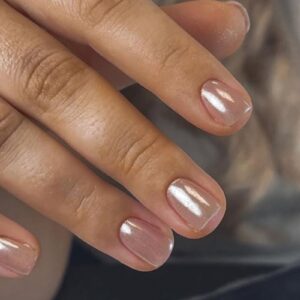
Life as a nail tech with Raynaud’s: 5 pros share their experiences
By Scratch Staff | 25 February 2025 | Feature, Health & wellbeing, Tech Talk
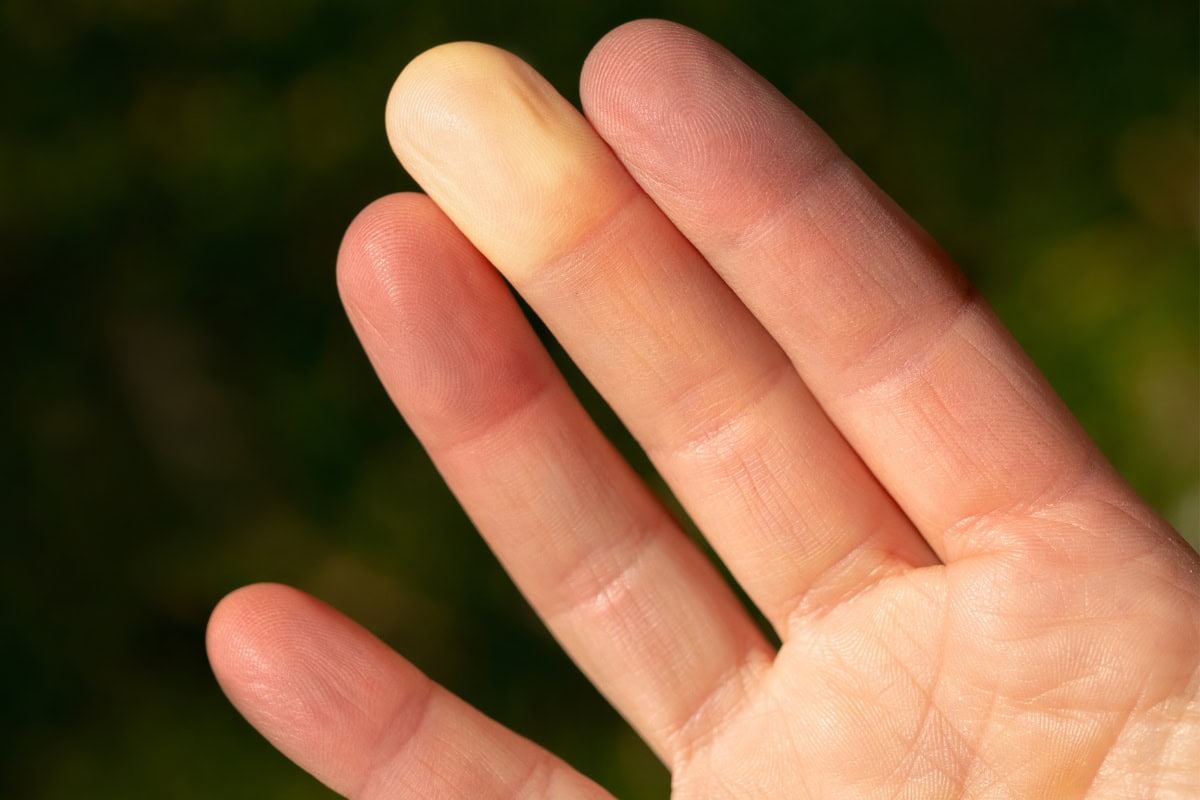
Raynaud’s syndrome, also known as Raynaud’s disease and Raynaud’s phenomenon, is a condition that affects blood circulation to fingers and toes and can cause them to change colour when cold, anxious or stressed.
Other symptoms include pain, numbness and pins and needles. Symptoms vary for each individual and may last for several minutes to hours. The NHS website notes that Raynaud’s can be caused by another health condition, certain medicines or working with vibrating tools for a long amount of time.
To mark Raynaud’s Awareness Month this February, Scratch talks to five nail techs with the condition…

Deborah Taylor – @eastbeachnails_lossiemouth
Tests for rheumatoid arthritis led to Scottish home salon owner, Deborah Taylor, discovering that she has systemic sclerosis, an autoimmune disease with effects including Raynaud’s. The tech was also diagnosed with hypermobile Ehlers-Danlos (a connective tissue disorder), early-onset arthritis and functional neurological disorder (a brain network issue). All of these conditions contribute towards her Raynaud’s symptoms.
“Raynaud’s affects me year-round; even the slightest change in temperature can trigger an attack, as can emotional stress,” Deborah tells Scratch. “During a flare-up, my fingertips or toes stiffen and turn white and this spreads, which is an incredibly painful sensation – like an icy burn and needles pricking the skin. When my hands or feet start to warm up, the pain increases until the attack subsides, and my skin turns from white to blue-purple to red, then back to normal. Before I was prescribed medication, flare-ups would cause my fingertips and toes to ulcerate and swell.”
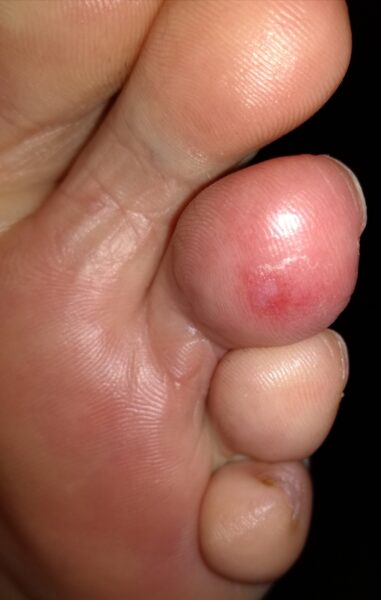
Deborah has put measures in place to ensure she can still work. “My nail hut has thermal insulation and blinds to retain heat,” she explains. “I invested in a smart heater that I control from my phone, so I can preheat my workspace and keep its temperature constant. I ask clients to keep their hands relaxed, as tight grip can trigger a flare-up because of the restriction in blood flow.”
Top tips for techs:
- Take breaks to eat. Food equals energy, which will support your body temperature.
- Exercise to improve blood circulation.
- Learn to say no; manage your work capacity to avoid stress and tiredness.
 Kirsty Parker – @kirsty_parker_nail_artist
Kirsty Parker – @kirsty_parker_nail_artist
Eleven years into her nail career, Plymouth’s Kirsty Parker was diagnosed with Raynaud’s, after the tips of some of her fingers turned white and numb. “Four of my fingers are affected, and not just at the tips,” shares Kirsty. “When I am cold, my fingers turn white and numb. The sensation isn’t painful, but is inconvenient and makes it difficult to function properly. When my hands warm up, my fingers return to their normal state.
“The symptoms present themselves more in winter. This means that in the colder months, I need to maintain the temperature of my hands, particularly in my workspace, so that I don’t lose feeling in my fingers and can work on clients,” Kirsty continues. “I also suffer from a repetitive strain injury (RSI), which causes pins and needles in my hands. I’m aware that both my conditions are progressively worsening, which is why I pursued educating.”
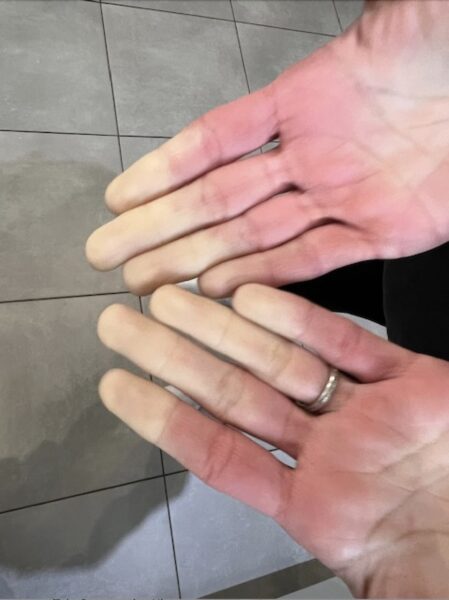
Top tips for techs:
- Take breaks between clients and exercise your hands. Blood flow can be restricted to the tips of fingers when working in the same position for a long time.
- Keep your body and working environment warm, with extra clothing layers and heaters.
- Train in E-file use, as the technique prevents and eases the symptoms of Raynaud’s.
 Fiona Chattle – @thenailroomclitheroe
Fiona Chattle – @thenailroomclitheroe
According to medical group, Mayo Clinic, about one-third of people with primary Raynaud’s (the most common type) have an immediate relative with the disorder. Lancashire-based Fiona Chattle remembers suffering with losing feeling in her hands and feet in cold temperatures all her life, but realised this was Raynaud’s after talking to her father, who has the condition.
“The slightest change in temperature will cause my fingers and toes to turn white and numb, from walking outside on a cold day and entering the fridge section of a supermarket, to holding something cold like a metal spoon or key,” Fiona details. “The cold sensation is extremely painful. In the evening, after my hands or toes have lost feeling during the day, they become very hot and feel like they are on fire.”

Client files: “I have a few clients with Raynaud’s, and advise not warming their hands or feet up too quickly, as this could cause chilblains,” notes Fiona. “I also recommend being very careful when using sharp tools, because people with Raynaud’s can have impaired healing of cuts.”
 Em Lee – @rebelnailstech
Em Lee – @rebelnailstech
After speaking with another nail tech, Essex’s Em Lee realised that the symptoms she was experiencing were Raynaud’s, and she was diagnosed in 2021. “My index and middle fingers on my working hand start to tingle, like a pins and needles sensation, then they go cold and numb,” she explains. “Their colour changes to a pale yellow, almost white, from my fingertip down to the second joint in both fingers. The fingers become painful and hurt to bend.
“With the condition impacting my working hand, it can delay me starting work, as I need to wait for the colour to return and the feeling to be restored in my fingers,” Em continues. “I experience symptoms when I go into the cold, but there have been occasions where I’ve been anxious about a design and have had a flare-up.”

Top tips for techs:
- When the weather’s cold, keep your hands warm by holding a hot drink, wearing gloves and rubbing hands together.
- If experiencing a flare-up, don’t panic as it will pass, and try to move your fingers to get the blood flow back.
- If the condition becomes unmanageable, visit a GP.
 Kathryn Collins – @kathryncollins_naillash_artist
Kathryn Collins – @kathryncollins_naillash_artist
“I get extremely cold hands and lose the blood from my fingers and toes, which causes them to turn white,” says Newport-based Kathryn Collins of her Raynaud’s symptoms – which she noticed over a decade ago. “The condition affects my work as the longer the flare-up is, the more painful it gets. I then struggle to grip things as I can lose the feeling in my fingers, so filing can be difficult. Sometimes when the blood flow returns, it feels like intense pins and needles.
“I get flare-ups multiple times a day in the winter, while summer is easier, as flare-ups only happen two to three times per week,” Kathryn adds. “My clients are very understanding. They don’t mind waiting if I have to excuse myself to run my hands under warm water for a few minutes.”
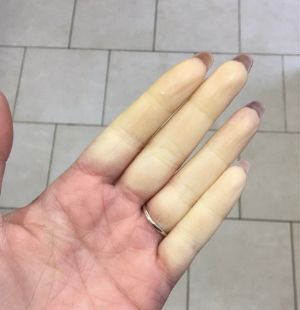
Top tips for techs:
- See your GP: I’ve been prescribed low dosage blood pressure tablets to take when needed, which help with the widening of the blood vessels in my fingers and toes.
- Be active and avoid smoking and caffeine, as these can trigger Raynaud’s symptoms.
- Keep your core warm by wearing a lot of layers to work and gloves when outside.

Read the latest issue







